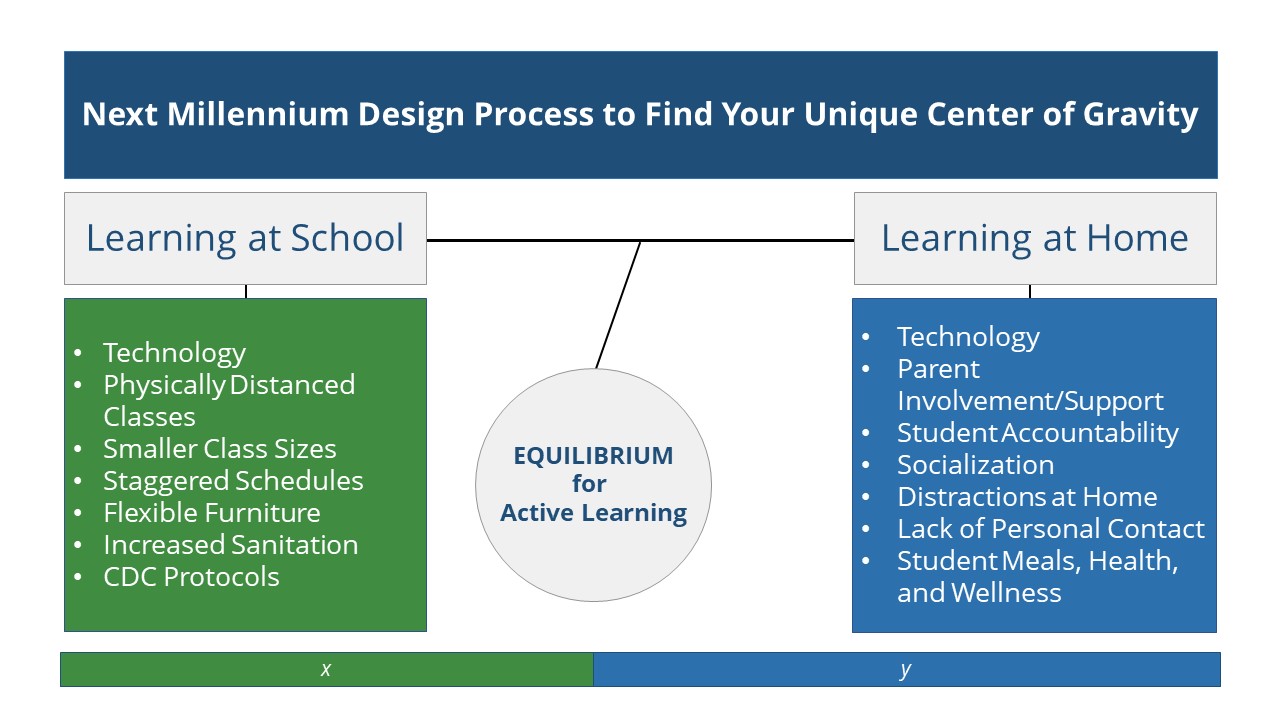What a year it has been. We are all trying to stay current on the latest updates from state government, and local, regional, and national news. The information can come fast and furious as educators, parents, district administration and design professionals alike pivot to catch up, to try to stay ahead of the new recommendations for our well-being, our families’ well-being, and the well-being of our communities.
The word “community” is a noun and defined as 1. a group of people living in the same place or having a particular characteristic in common, or 2. a feeling of fellowship with others, as a result of sharing common attitudes, interests, and goals. It can be group of students, siblings with a common experience unique only to them, a neighborhood of people, a demographic, a profession, or those working toward a common goal. It can be defined by physical attributes, occupation of physical space, or a virtual abstraction as in the sharing of common beliefs or values.
When we think of our K-12 educational community, we know learning can take place in a physical building and in virtual space, this has been an emerging practice over the past 30 years. Just not the entire country all at once. This sudden need to close the physical school building has forced teachers, students, and their families to become quickly adept and proficient with video conferencing and programs like Google Classroom. We know virtual learning can be successful. Can our educational communities be maintained virtually as well? Can printed packets sent to the household replace student-teacher interaction?
Community is emotional and social bonding. It’s about connections; it’s about time, space, experience, exploration and exchange. Interaction with a screen cannot deliver the same experience as being actively engaged with other people in real time in a shared physical place. It’s the unspoken, the body language, the humanity of it all. Not just pure intellectualism that makes our students, teachers, and families successful. Even still, we are moving forward with a virtual curriculum, because the moment calls for it. Teachers are still teaching, and students are still learning; parents have become both student and teacher. Meanwhile, schools are still providing food, childcare and community support for those in need.
The world after March 2020 has challenged the community of physically shared place and has replaced it with the community of virtual space. We have become polarized in a Physical versus Virtual sense of security and health. How do we bring these aspects back together while offering meaningful interpersonal connections? Each district and each community will find its own new center of gravity, mandated or otherwise.

How do we thoughtfully rediscover, redefine, shift, restore and protect the delicate balance? Not just replicate what’s been done before through technology; not just throw away what was done without technology; but to find the synergy that will support the practical aspects of learning with the extraordinary personal connections our school communities depend on? We can find practical solutions through design of our physical school buildings by reorganizing them to allow for social distancing, touch-less controls, increased sanitation practices through HVAC systems and UV light.
We can use the flexible furniture that so many schools can reduce congestion, and spread out student workspaces (perhaps into larger assembly spaces as well). We can stagger student class times to eliminate the overcrowding of the building and classrooms. There are countless ways to alter physical buildings to adapt to health and safety recommendations. But it leads us to these questions:
- What is the role of the school building to host the active endeavor of learning?
- What is the changing role of the home to host the active endeavor of learning virtually?
- What is the changing definition of teacher and student regarding the family structure and for how long can families “hold on” with these new responsibilities?
Through the design lens we can see new possibilities that complement the delivery of education and define the intersection between the physical environment and the virtual environment. Community of place is becoming more ubiquitous for education. The invasion of schooling into the home finds parents, students, and teachers all needing relief. Parents and students each need their own place to go to recharge and recapture some down time for themselves to reflect and absorb information; to be able to learn and develop in a way that balances basic human needs that go beyond the intellectual or academic.
We have seen our schools rise to meet the challenges and needs of their students, parents, families, and communities at large. In this sense, the school’s foundation is not the building itself, it is the school community, and the shared activity of learning. The way we move forward will not be either physical or virtual, not one or the other, together. Collectively, we will design spaces, communities of place, both materially and virtually. We are in for quite a journey forward, guiding each other through to clearer days, and what a year it will be. One more for the history books.
By Kevin J. Walsh AIA, ALEP, LEED AP, Partner and Bryan D. Manning AIA, Managing Director
